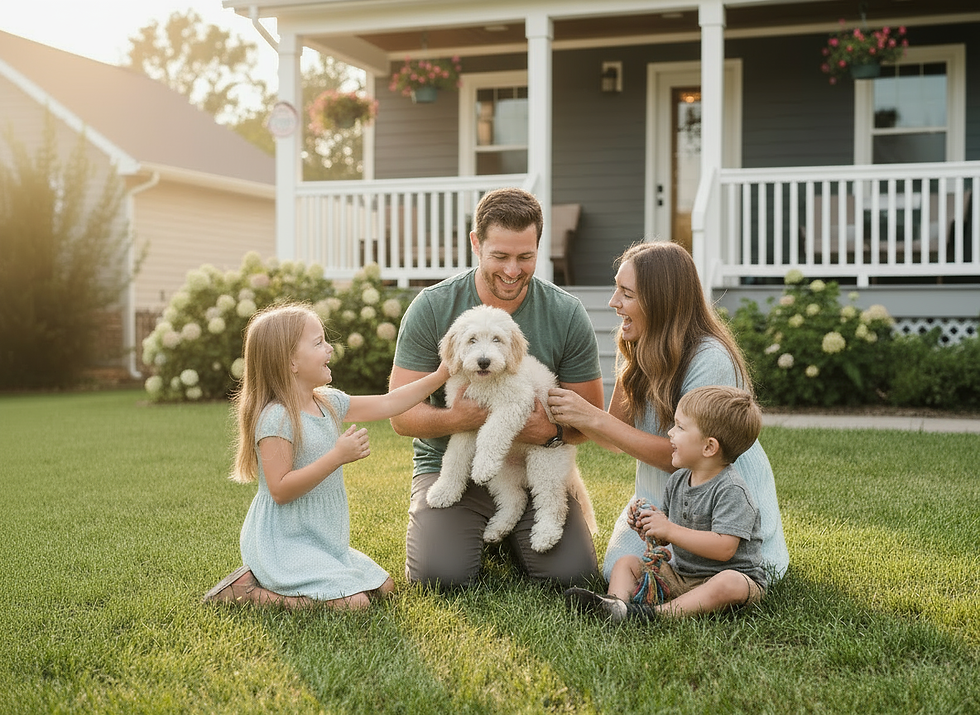The Power of Positive Reinforcement in Dog Training
- Kirk Prather
- Jan 30
- 4 min read

Training your dog is one of the most rewarding aspects of pet ownership. It strengthens your bond with your furry friend, builds mutual trust, and encourages good behavior. Positive reinforcement is one of the most effective, humane, and universally applicable methods among the many available training techniques. Whether raising a rambunctious puppy or helping an older dog learn new tricks, positive reinforcement can set you and your dog up for success.
What Is Positive Reinforcement Training?
Positive reinforcement is a training technique that rewards desired behaviors to encourage repetition. Instead of punishing a dog for unwanted actions, this method rewards good behavior with treats, praise, toys, or other motivators your dog values. The philosophy is simple: rewarded behaviors are more likely to be repeated.
For example, if your puppy sits on command, you might immediately reward them with a small treat and enthusiastic praise. Over time, your puppy associates the act of sitting with positive outcomes and will be more inclined to perform the behavior consistently.
Why Positive Reinforcement Matters
1. Builds Trust and Strengthens Bonds
Dogs thrive on trust and love. By using positive reinforcement, you’re creating a training environment where your dog feels safe and valued. This strengthens your bond and fosters a sense of mutual respect.
2. Promotes a Positive Learning Environment
Positive reinforcement eliminates fear and stress from the learning process. Dogs trained with this method are likelier to engage willingly and enthusiastically in training sessions.
3. Encourages Consistent Good Behavior
When a behavior is rewarded consistently, it becomes ingrained in your dog’s routine. Positive reinforcement sets a foundation for long-term behavioral success.
4. Works for Dogs of All Ages
Positive reinforcement is universally effective whether you’re working with a playful puppy or an older dog. While puppies may be learning foundational commands, older dogs can benefit from this technique when mastering new skills or unlearning bad habits.
5. Minimizes Behavioral Problems
By rewarding good behaviors, you naturally redirect your dog’s focus away from unwanted actions. Over time, this reduces the likelihood of behavioral issues such as excessive barking, chewing, or jumping.
Practical Tips for Using Positive Reinforcement
1. Choose the Right Rewards
Not all dogs are motivated by the same things. Some might work eagerly for small, soft treats, while others prefer verbal praise, belly rubs, or playtime with a favorite toy. Pay attention to what excites your dog the most and use that as your primary reward.
2. Be Consistent
Consistency is key in positive reinforcement. Always reward the behavior you want to encourage and do so immediately after it occurs. Delayed rewards can confuse your dog and weaken the association between the behavior and the reward.
3. Use a Marker or Cue
Many trainers use a clicker or a specific word like “Yes!” to mark the exact moment the desired behavior occurs. This helps your dog understand precisely what they did to earn the reward.
4. Start Small and Build Gradually
Begin training with simple behaviors like “sit” or “come” in a distraction-free environment. As your dog masters these basics, gradually increase the difficulty by adding distractions, extending the duration, or introducing new commands.
5. Be Patient and Positive
Every dog learns at their own pace. Stay patient, and avoid expressing frustration if progress is slow. Celebrate small victories and remember that training is a journey, not a race.
6. Fade Out Rewards Over Time
While frequent rewards are crucial in the early stages of training, you can gradually reduce their frequency as your dog becomes more consistent. Transition to intermittent rewards while maintaining praise and encouragement to ensure the behavior remains reliable.
7. Address Unwanted Behaviors Constructively
Instead of punishing your dog for undesirable actions, redirect them to a positive alternative. For example, if your dog is chewing on furniture, provide a chew toy and reward them for using it.
Positive Reinforcement with Puppies
Puppies are like sponges, soaking up information and forming lifelong habits during their early months. Positive reinforcement is particularly effective for teaching foundational commands such as “sit,” “stay,” and “come.” It’s also invaluable for potty training and discouraging behaviors like nipping or jumping. Keep training sessions short, fun, and frequent to match a puppy’s limited attention span.
Positive Reinforcement for Older Dogs
Older dogs can learn new behaviors, even if they’ve never experienced positive reinforcement. Whether teaching an older dog a new trick or addressing long-standing habits, the key is patience and persistence. Positive reinforcement can help older dogs build confidence and strengthen their relationship with you.
Common Mistakes to Avoid
- Using Rewards Ineffectively: Make sure your dog associates the reward with the specific behavior you’re encouraging. Timing is everything.
- Expecting Instant Results: Training takes time and consistency. Don’t get discouraged if progress feels slow.
- Overusing Treats: While treats are effective motivators, balance them with praise and other non-food rewards to prevent over-reliance on snacks.
Final Thoughts
Positive reinforcement is more than just a training method; it’s a way to nurture a happy, confident, well-behaved dog. By focusing on rewards and encouragement, you create a lifelong trust and respect foundation. Whether you’re guiding a playful puppy or an experienced adult dog, positive reinforcement empowers you and your furry companion to thrive together.
So grab some treats, bring your patience, and build those positive associations. Your dog will thank you with wagging tails and eager learning!




Comments